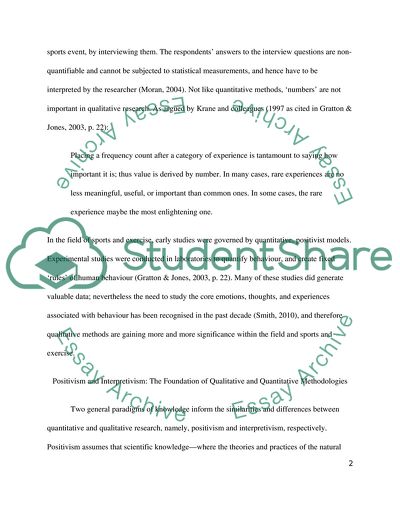Cite this document
(“Qualitative and Quantitative Methodologies in Sport and Exercise Research Paper”, n.d.)
Qualitative and Quantitative Methodologies in Sport and Exercise Research Paper. Retrieved from https://studentshare.org/sports-and-recreation/1618947-select-one-quantitative-and-one-qualitative-methodology-of-their-choice-and-will-write-an-essay-based-on-the-following-title-compare-and-contrast-how-quantitative-and-qualitative-methodologies-may-be-used-to-research-topics-in-sport-and-exercise
Qualitative and Quantitative Methodologies in Sport and Exercise Research Paper. Retrieved from https://studentshare.org/sports-and-recreation/1618947-select-one-quantitative-and-one-qualitative-methodology-of-their-choice-and-will-write-an-essay-based-on-the-following-title-compare-and-contrast-how-quantitative-and-qualitative-methodologies-may-be-used-to-research-topics-in-sport-and-exercise
(Qualitative and Quantitative Methodologies in Sport and Exercise Research Paper)
Qualitative and Quantitative Methodologies in Sport and Exercise Research Paper. https://studentshare.org/sports-and-recreation/1618947-select-one-quantitative-and-one-qualitative-methodology-of-their-choice-and-will-write-an-essay-based-on-the-following-title-compare-and-contrast-how-quantitative-and-qualitative-methodologies-may-be-used-to-research-topics-in-sport-and-exercise.
Qualitative and Quantitative Methodologies in Sport and Exercise Research Paper. https://studentshare.org/sports-and-recreation/1618947-select-one-quantitative-and-one-qualitative-methodology-of-their-choice-and-will-write-an-essay-based-on-the-following-title-compare-and-contrast-how-quantitative-and-qualitative-methodologies-may-be-used-to-research-topics-in-sport-and-exercise.
“Qualitative and Quantitative Methodologies in Sport and Exercise Research Paper”, n.d. https://studentshare.org/sports-and-recreation/1618947-select-one-quantitative-and-one-qualitative-methodology-of-their-choice-and-will-write-an-essay-based-on-the-following-title-compare-and-contrast-how-quantitative-and-qualitative-methodologies-may-be-used-to-research-topics-in-sport-and-exercise.


